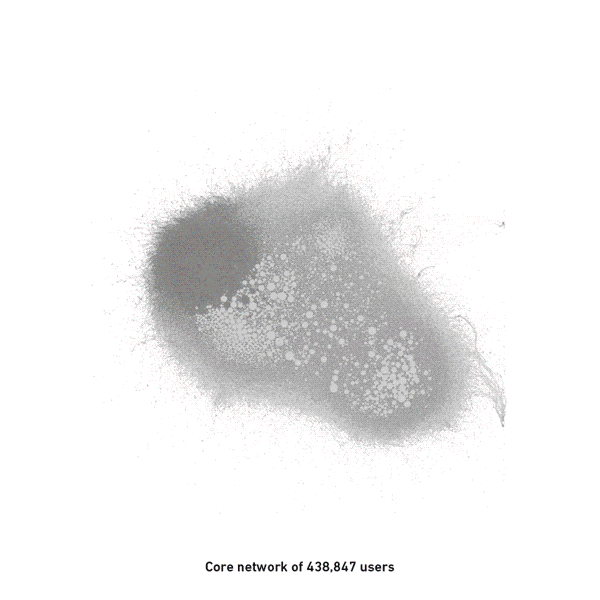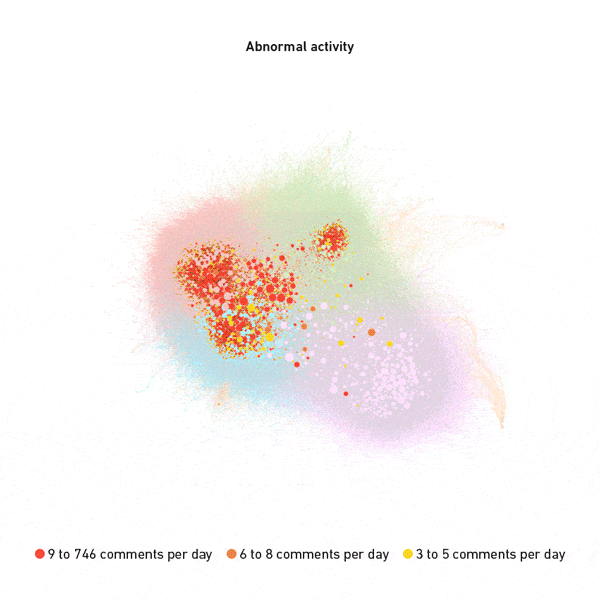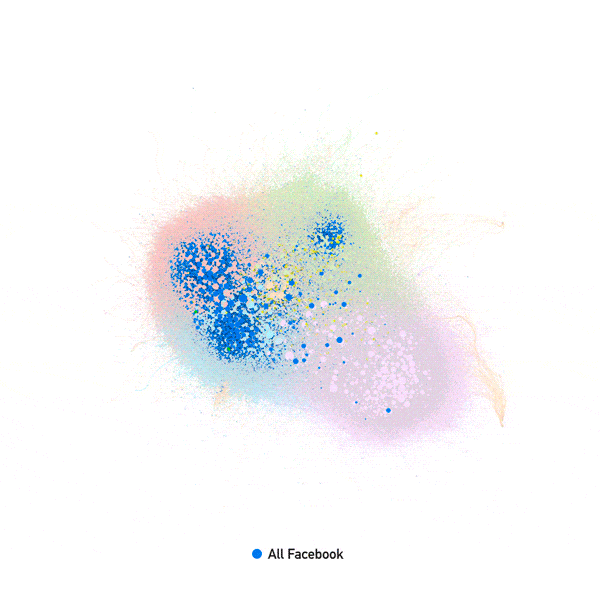Constella’s team analyzed the first weeks of the Yellow Vests movement, collecting data from November 13th to December 19th, 2018, in French, from all over the world. Public data analyzed include 11,510,953 results from 1,053,427 authors that produced 538,269 different conversations across social and digital media platforms such as Twitter, Facebook, YouTube, Instagram, blogs, forums, and other digital communities, including users commenting on news from media covering the early development of the Yellow Vests movement. Constella’s analysis focuses on understanding the role and digital influence of politicians, civil society, social and digital media platforms in shaping the public debate on the Yellow Vests movement.
The Yellow Vests Movement
The first wave of the Yellow Vests protests occurred in France around November 17th. Initial reactions on digital media did not show serious concern as publications used humorous sentiments in their content. In the second wave of protests on November 24th, protestors’ violence was the focus of media and citizens. During the third and fourth protests at the beginning of December, most of the activity reported was police violence, as well as criticism of responses of President Macron’s government to the social movement. The Yellow Vest movement was not initially explicitly associated with political ideologies. However, our research shows how groups with affinity to Right and Left political discourse took the opportunity to attack Macron’s government and link ideologies to the movement.

Five distinct communities:
Constella’s data scientists used Analyzer, our proprietary cloud-based analytics platform, to build and identify the largest community of users interacting in connection with the Yellow Vests public debate. This community was identified in Twitter and in order to perform a topological analysis of the propagation of messages, their interactions were filtered to be re-tweets only. This resulted in a unimodal network of authors (giant component, edges being retweets). To determine the different communities and represent the resulting network graph in a meaningful visual way, Constella’s data scientists applied different clustering algorithms like the Louvain method for community detection.
The graph resulted as shown below in a total of 438,846 authors (nodes) that created 10,280,277 comments in connection with the social movement. Five key communities emerged out of the community detection analysis:


-
- Support of Yellow Vests (52.8% of authors). Driven mostly by citizens and unsubscribed to political ideologies during the debate. This community reported police violence and criticized the government. The general sentiment of this community was satirical.
-
- Macron Supporters (15.3%). Empathized with protests while also defending the government. This community is the least connected with the community driven by the Yellow Vests initiative. Despite its solidarity with the initial protests later the community moved into a critical response for what they considered the “hijacking” of the Yellow Vests movement by Right and Left violent groups.
-
- Yellow Vests initiative (13.8%). Focused on their demands about fuel prices, users in this community also report police violence and defined the protests as non-political. Identities and leaders from La France Insoumise along with Generation [Le mouvement] were deeply embedded in this community which was very close & opposing the Right community.
-
- Right Community (8.3%).Users in this community use the situation to critic the government and blame the Left for violent episodes.
- New media (7.9%). Users from this community clustered in the center of the debate, penetrating all communities.
Measuring influence mathematically based on the structural connections of the authors in the digital debate and their ability to propagate messages to larger audiences in the network (centrality measurement) showed how the Macron Supporters community held only 4 of the top 50 most influential users, evidencing a lack of power in driving or influencing the public debate and an inability to capitalize on being one of the largest communities in terms of volume of users.
Constella’s analysts mapped the public profiles of key political figures within the graph finding 39 profiles from Rassemblement National, 29 from Debout la Republique/ Debout la France and 31 from La France Insoumise. La France Insoumise and Generation (Le movement) are deeply embedded in the Yellow Vest Core community, while Rassemblement National and Debout la Republique/ Debout la France were at the core of the Right community. Members of the most relevant political parties in France are present in three communities: Right, Yellow Vests and Macron’s supporters which offers evidence that the Support of Yellow Vests community was largely created by civil society.
Abnormality detection – Most Active Users
To determine if users demonstrating abnormal levels of activity were present in the debate, Constella’s team focused on an analysis of outliers and their frequency of posting. The results indicated that the 0.05% most active nodes (520 authors) created during the period of analysis 12.4% of all activity (1,427,643 comments).
High activity users presented patterns of non-human behavior, posting between 45 to more than 700 messages per day. Assuming an eight-hour workday per week, these figures represent on average between 6 to 91messages per hour, non-stop, Monday to Sunday, during the complete period of our analysis (of 37 days).

High activity users are strongly concentrated (87.12%) in two communities. However, none of these users are identified in the Support of Yellow Vests community, indicating this could be the only “organic” community not penetrated by disinformation actors. The Right community gathers 55.58% of the 520 most active users, followed by the Yellow Vests community with 31.54% of these most active users. Some of the 520 users seemed to have been created or re-purposed to literally flood the debate in these two communities: 36 of them posted between 19% and 66% of all their activity ever (since the creation of their accounts) in the period of analysis and only in connection with Yellow Vests debate.
Twitter successfully suspended some accounts that demonstrated non-human behavior, including one user who posted 26,870 comments. This level of behavior indicates likely automation or non-human synthetic behavior as well as the increasing vigilance of social networks against the threat of disinformation.
Right Community Analysis
A detailed analysis of the Right community surfaced that although marginal, US platform Gab.ai, which has been described as a platform for white supremacists and the alt-right, started to influence the Right community early in the campaign: 87 users within this community showed a profile also in Gab.ai or referenced to a Gab.ai profile in their bios. The most influential Gab.ai user within the top 50 most influential user’s in the Right community ranked in a top position (#19). The Right community was mostly influenced by activists – that curate and create their own content and messages – as well as members of Rassemblement National.

Role of traditional, emerging and foreign media in the debate
As explained in previous analyses, to determine which media site is most influential, Constella’s algorithms take into account the number of users and the intensity of links from media sites being shared across social media sources to calculate how influential the site is within the context of the analysis. Constella’s software ranks content influence similar to Google’s algorithms for web page ranking: the content from more relevant sites is likely to receive more attention from more users over a sustained period of time.
Traditional French media and social media platforms ranked high in influence, as did a growing network of emerging digital media with extremely segmented editorial positions, as well as foreign media sites Russia Today (ranked within Top 25 most influential media) and Sputnik.

By analyzing the top 520 most active users content distribution patterns there is only one difference between those authors within Right community and all other communities: Russia Today and Sputnik content shows a high affinity to be distributed within authors in Right community. Users from this community share with high-intensity Russia Today and Sputnik: 21.04% of them shared at least one piece of content from these sites. Less than 1% of the users from the Support of Yellow Vests community or Macron supporters community did so.
It was also interesting to analyze what communities of users have a larger contribution to share each domain in order to understand anomalies. For example, the Right community gathers groups of sites such as: Adoxa.info (89.6% of its sharing coming from Right users), Alterinfo.ch (66.1%), Planetes360.fr (68.8%), Policeetrealites.com (75.7%), Damocles.co (91.3%) and Nouvelordremondial.cc (90%). All websites were found within the top 150 most influential domains.

By studying the propagation of Facebook.com content within the giant component, data scientists gathered a good picture of the extent to which Facebook impacted beyond its own closed community. Facebook content was shared 48,496 times within the giant component under analysis. The majority of content shared came from Facebook pages, Facebook events, videos, or groups.


The filtering identified a group of 191 distinct Facebook events associated with Yellow Vest coordination. These events were shared 3,550 times by a group of 2,740 users largely concentrated in the Yellow Vests initiative (44.38%) and Right community (15.18%) that intensively used this feature to coordinate.
Global Migration Pact
During the period of analysis, a debate about the UN Marrakech pact was initiated and data showed that specific authors intended to connect the debate with the Yellow Vests protests. A total of 19,347 users (4.4% of the total giant component) made connections between the UN pact on immigration and the Yellow Vests movement. However, these users’ distribution is far from homogeneous: 65.3% of them were located in the Right community. In this community 1 of every 3 users (34.5%) posted about the UN pact in connection with Yellow Vests.
In the rest of the communities, the interest was very low with 0.4% of Support of Yellow Vests community users discussing the issue. Even if very low, Macron’s support community briefly engaged in the discussion with 4.2% of users active on the response to the Right community.
Interested in our work? Please contact us at info@constellaintelligence.com. To learn more about Constella, subscribe to our newsletter below.





